Photographs: Mahdi Ghorbani/Reuters
The world might have experienced a tremendous boom in the aviation industry, but disastrous air crashes have periodically rattled the faith of many.
With thousands dead or turning victims of irreparable damage, these air crashes have taught the world a lesson that still it needs to go a long way in terms of putting in place foolproof safety and security measures, and it cannot afford to be reckless even for a split second.
From deadly terror strikes to inclement weather -- the reasons behind air crashes could be many, as massive disasters thousands of feet above the ground still continues to be a murky reality.
Rediff.com takes a look at some of the most disastrous air crashes that have shaken the world.
...
The 9/11 terror strikes, 2003
Image: The hijacked airliners destroyed the twin towers of the World Trade Centre in New YorkProbably the biggest air crash in the history, the September 2001 terror strike in New York was also one of the biggest 'turning points' the world politics have ever seen.
On the morning of September 11, 2001, 19 Al Qaeda terrorists hijacked four commercial passenger jet airliners. The hijackers intentionally crashed two of the airliners into the Twin Towers of the World Trade Center in New York City, killing everyone on board and thousands of those working in the buildings.
Both towers collapsed within two hours, destroying nearby buildings and damaging others. A third airliner was crashed into the Pentagon. Hijackers had redirected the fourth plane toward Washington, D.C., targeting either the Capitol Building or the White House, but crashed it in a field near Shanksville in rural Pennsylvania after passengers attempted to retake control of the airliner. There were no survivors from any of the flights.
Nearly 3,000 victims and the 19 hijackers died in the attacks. Among the 2,753 victims who died in the attacks on the World Trade Center were 343 firefighters and 60 police officers from New York City and the Port Authority, and 8 private emergency medical technicians and paramedics.
Another 184 people were killed in the attack on the Pentagon. The overwhelming majority of casualties were civilians, including nationals of over 70 countries.
Al Qaeda leader Osama bin Laden initially denied involvement, but in 2004 he finally claimed responsibility for the attacks.
Al-Qaeda and bin Laden cited United States' support of Israel, the presence of US troops in Saudi Arabia, and sanctions against Iraq as motives for the attacks. The United States responded to the attacks by launching the 'War on Terror', invading Afghanistan to depose the Taliban, who had harboured Al Qaeda members.
It was not until May, 2011 that bin Laden was found and killed, to which US President Barack Obama asserted that the 9/11 saga has somewhat reached its closure.
Tenerife airport disaster, 1977
Image: The Tenerife airport disaster that claimed 583 livesThe Tenerife airport disaster occurred on March 27, 1977, when two Boeing 747 passenger aircraft collided on the runway of Los Rodeos Airport (now known as Tenerife North Airport) on the Spanish island of Tenerife, one of the Canary Islands. With a total of 583 fatalities, the crash is one the deadliest accident in aviation history.
The aircraft involved, KLM Flight 4805 and Pan Am Flight 1736, were, along with many other aircraft, diverted to Tenerife from Gran Canaria Airport after a bomb exploded there.
The threat of a second bomb forced the authorities to close the airport while a search was conducted. So many airplanes were diverted to the smaller Tenerife airport that controllers were forced to park many of them on the taxiway, thereby blocking it. Further complicating the situation, while waiting for authorities to reopen Gran Canaria, a dense fog developed at Tenerife, greatly reducing visibility.
When Gran Canaria reopened, the parked aircraft blocking the taxiway at Tenerife required both 747s to taxi on the only runway in order to get in position for takeoff. Due to the fog, neither aircraft could see the other, nor could the controller in the tower see the runway or the two 747s on it.
As the airport did not have ground radar, the only means for the controller to identify the location of each airplane was via voice reports over the radio. As a result of several misunderstandings in the ensuing communication, the KLM flight attempted to take off while the Pan Am flight was still on the runway. The resulting collision destroyed both aircraft, killing all 248 aboard the KLM flight and 335 out of 396 aboard the Pan Am flight. 61 people aboard the Pan Am flight, including the pilots and flight engineer, survived the disaster.
Investigation later revealed the primary cause of the accident was the captain of the KLM flight took off without clearance from Air Traffic Control.
The investigation, however, specified that the captain did not intentionally take off without clearance, rather he fully believed he had clearance to take off due to misunderstandings between his flight crew and ATC. Ultimately KLM admitted their crew was responsible for the accident, and the airline financially compensated the victims.
Japan air crash, 1985
Image: The Japan air crash, which killed 520The Japan Airlines flight 123 took off from Tokyo International Airport (Haneda) to Osaka International Airport (Itami) on August 12, 1985.
The Boeing 747-146SR that made this route, registered JA8119, suffered mechanical failures 12 minutes into the flight and 32 minutes later crashed into two ridges of Mount Takamagahara in Ueno, Gunma Prefecture, 100 kilometers from Tokyo.
The crash site was on Osutaka Ridge, near Mount Osutaka. All 15 crew members and 505 out of 509 passengers died, resulting in a total of 520 deaths and four survivors.
It is currently the deadliest single-aircraft accident in history, and the third deadliest plane crash in history in terms of all fatalities.
Charkhi Dadri mid-air collision, 1996
Image: A fireman hoses down the smouldering wreckage of a Saudi Arabian jumbo jet after it crashed outside the Charkhi Dadri village after colliding with a Kazakh cargo plane.Photographs: Reuters
The 1996 Charkhi Dadri mid-air collision occurred on November 12, 1996 when Saudi Arabian Airlines Flight 763 (SVA 763), a Boeing 747-168B en route from New Delhi to Dhahran, Saudi Arabia, collided in mid-air with Kazakhstan Airlines Flight 1907 (KZK 1907), an Ilyushin Il-76 en route from Shymkent, Kazakhstan to New Delhi, over the village of Charkhi Dadri in Haryana.
All 349 people on board both the flights were killed, making it one of the deadliest mid-air collisions in the history of aviation.
Flight SVA 763 departed Delhi at 6:32 pm IST. Flight KZK 1907 was, at the same time, descending to land at Delhi.
Flight KZK 1907 was cleared to descend to 15,000 feet (4,600 m) when 74 miles (119 km) from the airport while Flight SVA 763, traveling on the same airway as Flight KZK 1907 but in the opposite direction, was cleared to climb to 14,000 feet (4,300 m).
About eight minutes later, around 6:40 pm, Flight KZK 1907 reported having reached its assigned altitude of 15,000 feet (4,600 m) but it was actually lower, at 14,500 feet (4,400 m), and still descending.
When the controller called Flight KZK 1907, he received no reply. He warned of the other flight's distance, but it was too late -- the two aircraft had collided.
The tail of KZK 1907 sliced through the left wing of SVA 763. Flight SVA 763 had lost its horizontal stabilizer in its left wing and as a result, went into spiral motion towards the ground resulting in an in-flight structural failure; at almost 1,135 kilometres per hour the aircraft hit the ground.
Turkish Airlines Flight 981 crash, 1974
Image: An artist's rendition of the Turkish Airline crashPhotographs: Wikimedia Commons
Turkish Airlines Flight 981, McDonnell Douglas DC-10, registered TC-JAV and named the Ankara, crashed in Fontaine-Chaalis, Oise, France, outside Senlis, on March 3, 1974.
Known as the 'Ermenonville air disaster', from the forest where the aircraft crashed, the accident resulted in the deaths of all 346 on board.
The crash of Flight 981 was the deadliest air disaster of all time before the Tenerife Disaster event of 1977.
The crash resulted from the failure of the rear cargo hatch latching system, which allowed the hatch to blow off in flight.
The resulting decompression of the cargo hold caused the cabin floor above the hatch to collapse. The flight control cables for the airplane that ran through the floor were severed, leaving the pilots with almost no control over the aircraft.
The 'Kanishka' bombing, 1985
Image: The wreckage of the Air India Flight 182 after the bombing that led to its crash in 1985On June 23, 1985, Air India Flight 182 named after Emperor Kanishka operating on the Montreal--London--Delhi route, was blown up by a bomb while in Irish airspace at an altitude of 31,000 feet (9,400 m), and crashed into the Atlantic Ocean.
A total of 329 people were killed, including 280 Canadians, 27 British citizens and 22 Indians. The incident was the largest mass murder in modern Canadian history.
Investigation and prosecution lasting almost 20 years made this the most expensive trial in Canadian history. Although some Sikh supporters blamed the bombing as a 'false flag' effort by the Indian intelligence to discredit their movement, Canadian law enforcement determined that the main suspects in the bombing were members of the Sikh militant group Babbar Khalsa and other related groups based in Canada.
Korean Airline disaster, 1983
Image: The Korean Airline, which was shot down by Soviet interceptors, crashed near Moneron Island, and resulted in the death of 269 peopleThe Korean Air Lines Flight 007, a civilian airliner, was shot down by Soviet interceptors on September 1, 1983, over the Sea of Japan, near Moneron Island just west of Sakhalin island.
All 269 passengers and crew aboard were killed, including Lawrence McDonald, a sitting member of the United States Congress. The aircraft was en route from New York City to Seoul via Anchorage when it strayed into prohibited Soviet airspace around the time of a planned missile test.
The Soviet Union initially denied knowledge of the incident but later admitted shooting the aircraft down, claiming that it was on a spy mission. The politburo said it was a deliberate provocation by the United States to test the Soviet Union's military preparedness, or even to provoke a war.
The United States accused the Soviet Union of obstructing search and rescue operations. The incident was one of the tensest moments of the Cold War, and resulted in an escalation of anti-Soviet sentiment, particularly in the US.
The Iranian Airlines disaster, 1988
The Iran Air Flight 655, a civilian jet airliner, was shot down by US missiles on July 3, 1988, over the Strait of Hormuz, toward the end of the Iran Iraq War.
The aircraft, an Airbus A300B2-203 operated by Iran Air, was flying from Bandar Abbas, Iran, to Dubai, when it was destroyed by the US Navy's guided missile cruiser USS Vincennes, killing all 290 passengers and crew aboard, including 66 children, ranking it ninth among the deadliest disasters in aviation history.
Vincennes was traversing the Strait of Hormuz, inside Iranian territorial waters, and at the time of the attack IR655 was within Iranian airspace.
According to the US government, the crew identified the Iranian Airbus A300 as an attacking F-14 Tomcat fighter. The Iranian government maintains that the Vincennes knowingly shot down the civilian aircraft.
The event generated a great deal of controversy and criticism of the US. Some analysts have blamed US military commanders and the captain of the Vincennes for reckless and aggressive behaviour in a tense and dangerous environment.
In 1996, the United States and Iran reached "an agreement in full and final settlement of all disputes, differences, claims, counterclaims" relating to the incident at the International Court of Justice. As part of the settlement, the United States agreed to pay $61.8 million, an average of $213,103.45 per passenger, in compensation to the families of the Iranian victims. However, the United States has never admitted responsibility, nor apologised to Iran.
The Lockerbie bombing, 1988
Image: File photo shows rescue personnel carrying a body away from the site of the LockerbiePhotographs: Reuters
On December 21, 1988, Pan American World Airways' third daily scheduled transatlantic flight -- a Boeing 747 121 named 'Clipper Maid of the Sea' -- from London Heathrow Airport to New York's John F Kennedy International Airport was destroyed by a bomb, killing all 243 passengers and 16 crew members.
Eleven people in Lockerbie, in southern Scotland, were also killed as large sections of the plane fell in the town and destroyed several houses, bringing total fatalities to 270.
As a result, the event has been named by the media as the 'Lockerbie bombing'.
On February 24, 2011, Libya's former justice minister Mustafa Abdul Jalil said that Muammar Gaddafi had personally ordered the Lockerbie bombing.
Air France crash, 2009
Image: Brazilian Navy sailors pick a piece of debris from Air France flight AF447 out of the Atlantic OceanPhotographs: Handout/Reuters
Air France Flight 447 was a scheduled airline flight from Rio de Janeiro to Paris that crashed into the Atlantic Ocean on June 1, 2009, killing all 216 passengers and 12 aircrew.
The investigation is still ongoing, and the cause of the crash has not yet been formally determined.
An interim report from the BEA on May 27, 2011 revealed that the aircraft crashed following an aerodynamic stall. It further revealed that minutes prior to the crash, the pitot tubes (speed sensors) started to give inconsistent readings.
The cause of the faulty readings is yet to be determined, but a theory is that ice formed on the pitot tubes, which would have caused them to freeze, giving inconsistent measurements owing to their reliance on air pressure measurements to give speed readings.
A later report from the BEA, released on July 29, 2011, indicated that the pilots had not been trained to fly the aircraft "in manual mode or to promptly recognise and respond to a speed-sensor malfunction at high altitude" nor was this a standard training requirement at the time of the accident.
The investigation into this accident was severely hampered by the lack of any eyewitness evidence and radar tracks, as well as by difficulty finding the aircraft's black boxes, which were located and recovered from the ocean floor two years later in May 2011.

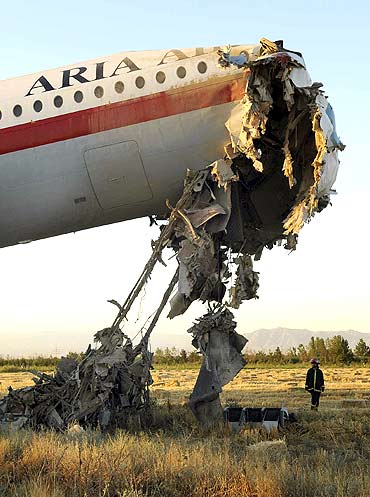
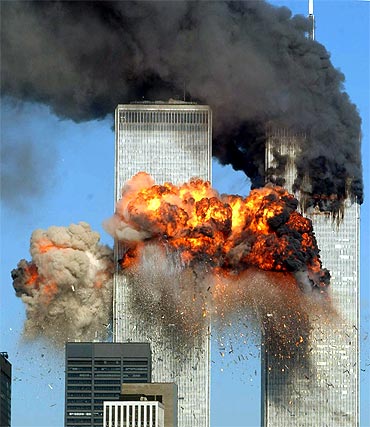

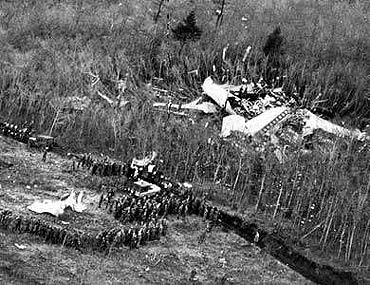
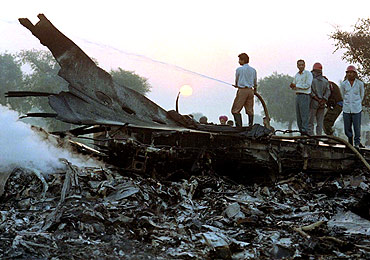

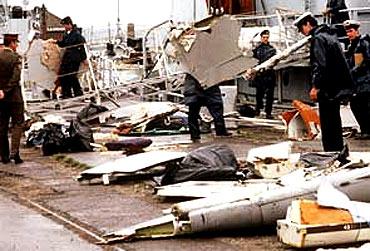

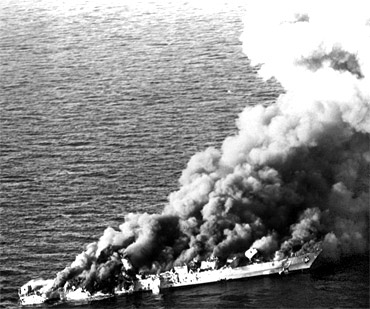

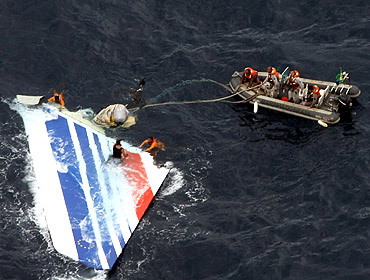
article